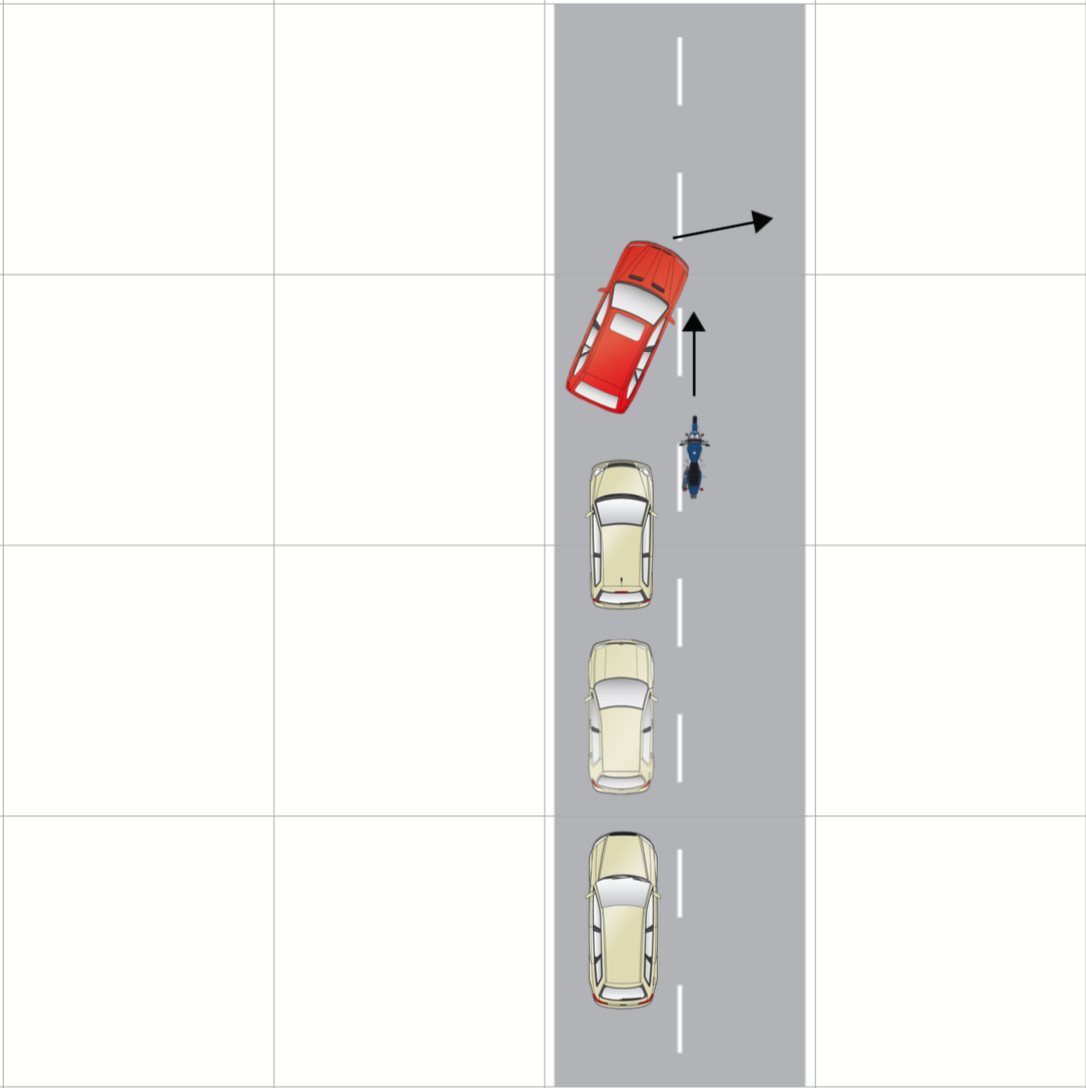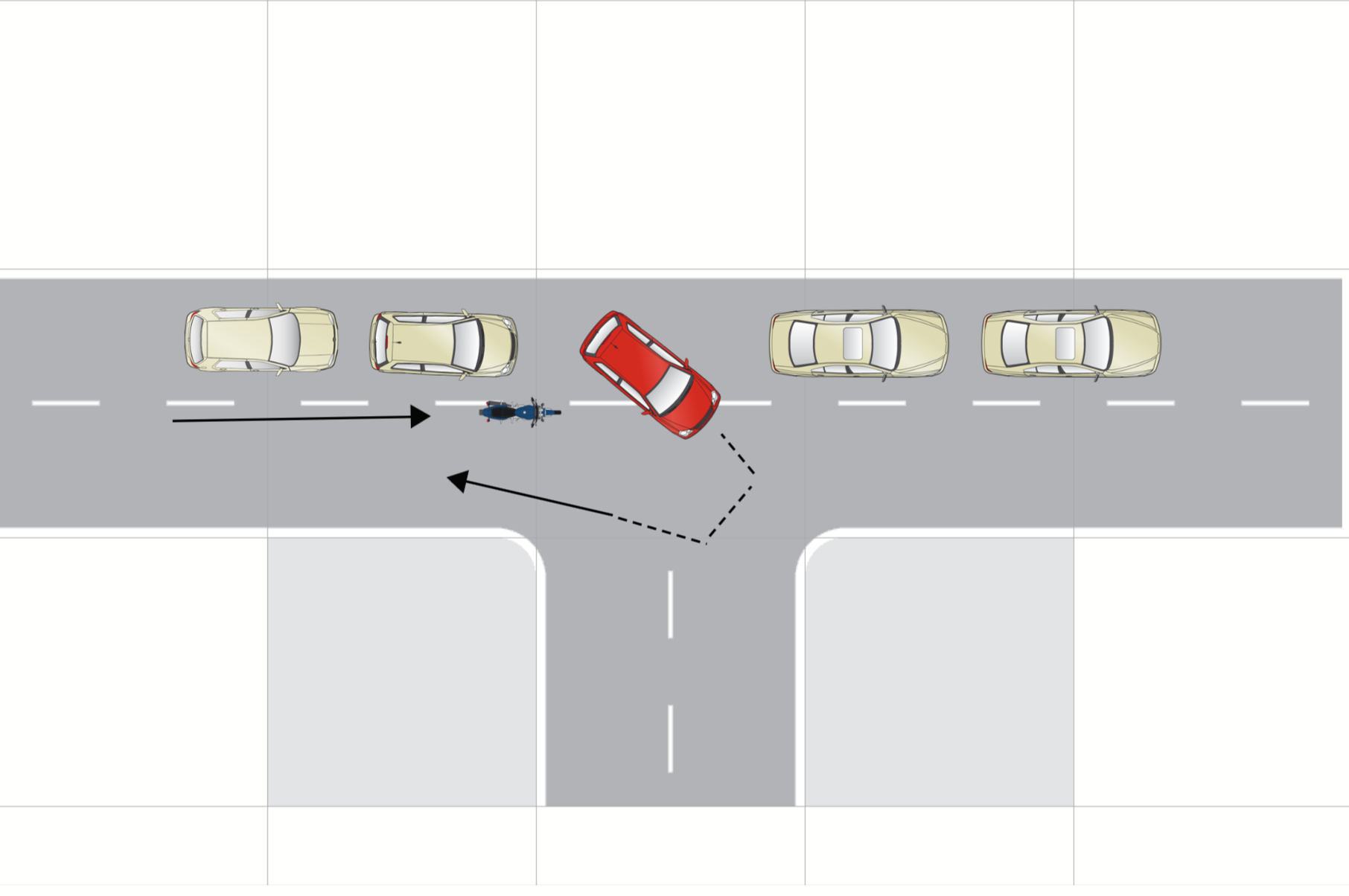
“ Examples of case law involving filtering ”
Filtering through stationary or slow-moving traffic is not illegal and it is a skill learned by motorcyclists during their basic training. Road users need to be aware that motorcyclists filter and they should be taking all necessary action (such as checking their blind spots and mirrors regularly) to avoid colliding into a motorcyclist who is safely filtering through the traffic.
Be rest assured that the third party driver and/or their insurer will attempt to argue that the fault lay entirely with the motorcyclist who was filtering through the traffic. This is why you need to instruct a solicitor who has extensive experience in dealing with these sort of accidents. Call us on 01784 682 682.
Some examples of case law* involving a filtering motorcyclist are:
*Please remember that no two cases are exactly the same, each case is unique and is based on it’s own set of circumstances and available evidence.
Harding v Hinchcliffe 1964
The Claimant was riding his motorcycle to school along a class B road and came up behind a bus. The bus signalled his intention to turn left into a minor road and the Claimant wishing to travel straight on, overtook the bus as it was turning. The Claimant was subsequently hit by the Defendant, who was turning out of the minor road as the bus was turning into it.
Neither the Claimant nor the Defendant had seen each other, since the bus was masking both vehicles. It was initially held that the Defendant was not negligent since he could not have anticipated a motorcyclist being masked behind the bus for all of that time and distance. On appeal it was held that the Defendant should have waited longer for the bus to complete its manoeuver as there was always the possibility of a vehicle being masked by the bus. The Defendant was held liable and the Claimant recovered damages in full (i.e. on a 100% basis).

Pell v Moseley 2003
The Claimant was riding his motorcycle along a single carriageway road in Northamptonshire. The Defendant was driving a people carrier travelling in the same direction as the Claimant and was at the front of a line of three cars. The route that the vehicles took passed a field in which a motor cross event was being held. The Defendant approached the field on her right along a straight stretch of road with a 60 mph speed limit. The Claimant had started to overtake the line of vehicles and as he overtook her car, the Defendant turned right into the field and struck the motorcycle. The Claimant’s case was that his manoeuvre of overtaking the vehicles was a perfectly safe manoeuvre. The Claimant claimed that the Defendant did not indicate and that he had first appreciated any intention by her to do so when he had seen her brake lights engage, but by then it was too late. The Defendant’s case was that she drew up to the gateway in a normal way and had slowed and indicated to make her move.
Initially it was held that the Defendant had failed to keep a proper look out by not seeing the Claimant approaching from the rear and no degree of contributory negligence was found against the Claimant. However on appeal, it was ruled that the Claimant knew a motor cross event was being held and that he should have been aware of the possibility of traffic turning into the field on the right and also that, notwithstanding an argument that the Defendant did not indicate, he should have been aware due to the Defendant's slow manoeuvring that there was a possibility she would turn. Liability was split evenly (50/50) between the parties.

Davis v Schrogin 2006
The Claimant driving a motor car had been stuck in a traffic jam on a straight section of a single lane road. The Defendant had been riding his motorcycle on the same road in the same direction and as there had been nothing oncoming in the opposite lane was able to overtake the stationary queue. The Claimant decided to execute a U-turn to get out of the queue and moved slightly to the left before executing his manoeuver. Although the motorcycle had been there to be seen, about five car lengths away, the Claimant only looked to his left as he pulled into the opposite lane thus colliding with the motorcycle.
It was held in the Court of Appeal that as the Defendant motorcyclist was so close to the point of impact that he could have not avoided the collision, there was simply no basis for any finding of contributory negligence. (i.e. 100% in favour of the Defendant).

Beasley v Alexander 2012
The Claimant was filtering past stationary traffic when the Defendant car who was stuck in the queue of traffic has decided to perform a U-turn in the mouth of the road to the right. The Claimant was very close to the Defendant when he decided to perform a U-turn and did not afford the Claimant enough time to take any evasive action.
The Court ruled that the accident was as a result of the Defendant’s negligence and was not contributed to by the Claimant. (i.e. 100% in favour of the Claimant)

Woodham v Turner 2012
The Defendant, a coach driver, had stopped at a T-Junction intending to turn right into a major road. A large tractor stopped to the right of the junction and left a gap. Two motorcyclists filtered up the offside past the queue of traffic behind the tractor and trailer. One motorcyclist remained behind the tractor and trailer but the lead motorcyclist (the Claimant) continued on. The Defendant pulled slowly out of the minor road. The Claimant, travelling at 20mph, filtered past the tractor and collided into the Defendant’s vehicle.
The Defendant was partly at fault as she should have waited until there was a smaller vehicle on her right which didn’t obscure her view. The Claimant was familiar with the road chose to overtake the stationary tractor at 20mph when the other motorcyclist remained stationary. It was found that had the Claimant been traveling at a speed of 15 mph he would have had more chance of avoiding a collision. Both parties found equally (i.e. 50/50) to blame.

Jones v Lawton 2013
The Claimant was riding a low slung motorcycle along the A386, one of the main routes into and out of Plymouth. The speed limit was 30 mph. He was overtaking two queues of traffic in the northbound lanes and was over the white lines using the southbound lane to travel northbound. The Defendant meanwhile having observed that cars had stopped from his right and having a clear view to his left pulled out across the path of the Claimant in order to turn right. He did not stop or edge out gradually beyond the line of traffic and he didn’t listen for approaching traffic.
The Court ruled that a driver crossing lanes of slow moving traffic had to be aware of the possibility that a motorcyclist might be proceeding along the outside of the traffic. There was an obligation for the driver to edge forward to alert the motorcyclist and giving himself the best opportunity to see the motorcyclist. There was also an obligation to look to the right, after checking the left was clear so that he would have warning of the motorcyclist approaching. The Defendant was found to have done none of those things, these failures caused the collision, and therefore, the Defendant was found 2/3’s to blame. The Claimant was found 1/3 to blame, his failure to keep a proper look out, and his excessive speed (30 mph) for the circumstances had been causative of the accident.